A Complex Instruction Set Computer (CISC) is a type of microprocessor designed to execute complex operations using a single instruction set. This approach reduces the number of instructions required for a task but often requires multiple clock cycles to complete each operation.
In this guide, we will cover:
- What a CISC microprocessor is
- How it works
- How to create a CISC block diagram
- Applications of CISS
By the end, you will have a clear understanding of the basic working principles of CISC microprocessors and the different methods used to create their block diagrams. Let’s get started.
In this article
Block Diagram of CISC
CISC uses complex instructions, meaning there is complex decoding. The Addressing modes are Complex and deal with more than one data type. The block diagrams provide a way to understand the complexity of these processors. Here is the complete block diagram of the CISC.
CISC microprocessors are programmed to handle a minimum set of instructions per calculation or operation. They are not as fast as RISC, but they are built for precision and reliability. Here is the working principle of CISC.
Instruction Decoder
Instruction Decoder processes high-level instructions into a series of micro-operations. Each instruction is passed through multiple components, including memory lines and register files, and it performs arithmetic and logical operations. But the signal command is an instruction provided to the system.
Control Unit
The control unit processes this instruction and converts it into manageable tasks. The control unit is also responsible for managing the memory-to-memory instructions as well.
Memory-to-Memory Architecture
The CISC is programmed to process information from memory-to-memory units. They do not pass information to the register files like RISC. This feature helps the system to reduce the data storage function from one place to another as data is passed from memory-to-memory units. It supports data handling more effectively and requires fewer code lines to operate.
Variable Length Instruction Sets
The variable length of the instruction sets enables CISC to handle complex instructions. This functionality helps users perform different tasks. Having variable instruction sets with precision. However, for such a system to work, there is a need for a specialised control unit in the CPU to work collectively. Otherwise, the system might get slow, and changes in delayed response are higher.
Applications of CISC
Here are a few of the main applications of the CISC. Let's check them out one by one.
Laptops and Computers
Most of the latest computers and laptops, especially x86 Intel systems, use these CISC chips. These systems are responsible for running complex systems, including Windows, Linux, macOS, and Android. They manage a lot of tasks, including internet browsing, multitasking, and multimedia operations.
Workstations for Multitasking
Workstations that are mostly used in engineering applications and research centers work through CISC chips. CISC helps them handle multiple tasks through a single instruction set, even when they need more than one cycle of operation.
Most of the GPU architectures use these chips for better data rendering, such as image and video processing, which require CISC. Although GPUs are built for high performance, when they are combined with CISC processors, their efficiency reaches the top.
Compatibility Dependent applications
Most healthcare and finance software, despite being older versions, gets help from the CISC chips. It helps them save a lot of costs and time because they don't need to change their entire infrastructure to match the latest software available.
Just like these compatibility-dependent applications, most of the cloud data centres use these CISC chips to help them work normally without losing efficiency.
Electronic Devices
Most of the electronic devices being used in our homes use these chips. They might include smartwatches, smart TVs, and gaming consoles.
The gaming consoles need better graphics rendering, videos, and audio processing at the same time. The complex instruction set helps user to get a better experience while playing games and streaming on different platforms by matching their compatibility.
How To Make a CISC Block Diagram
Designing a block diagram from scratch can often feel tedious and time-consuming. However, the process becomes much simpler with the help of a specialized tool designed for this purpose.
EdrawMax is one such platform, offering all the essential tools and resources to make diagram creation effortless. Below are some of the standout features that set EdrawMax apart from other methods of drawing block diagrams.
- Support Multiple Diagram Types: EdrawMax supports over 210+ types of diagrams, including flowcharts, network diagrams, block diagrams, family trees, floor plans, mind maps, and org charts, making it a complete diagramming solution.
- Clean Interface: EdrawMax offers a clean interface with drag-and-drop functionality, allowing users to design diagrams effortlessly. You don't need to be an expert to start using this tool.
- Symbols Library: EdrawMax comes with an extensive symbols library that helps you use any symbol or element needed to complete your Diagram.
- Templates Library: The vast templates library is one of the best features of EdrawMax. It offers templates for almost all categories for you to use and make your own designs.
- Compatibility: EdrawMax is available for all the latest devices and operating systems, including Windows, macOS, Linux, iOS, Android, and Web. You can use it anywhere you need.
- Multiple Export Options: EdrawMax comes with multiple import and export options. You can export high-quality designs in PDF, JPG, PNG, SVG, and many more formats.
Method 1: Start from Scratch
Looking to create a CISC block diagram? EdrawMax is an all-in-one platform that provides extensive customization—templates, symbols, connectors, and styling tools—so you can produce accurate, professional diagrams with ease. Follow the step-by-step guide below to complete your CISC block diagram.
Step1 Open EdrawMax and get started
- Open EdrawMax Homepage and find the Block diagram Section. Click New Drawing to access the empty canvas.
- Once opened, you will find the relevant shapes and blocks needed to start designing.
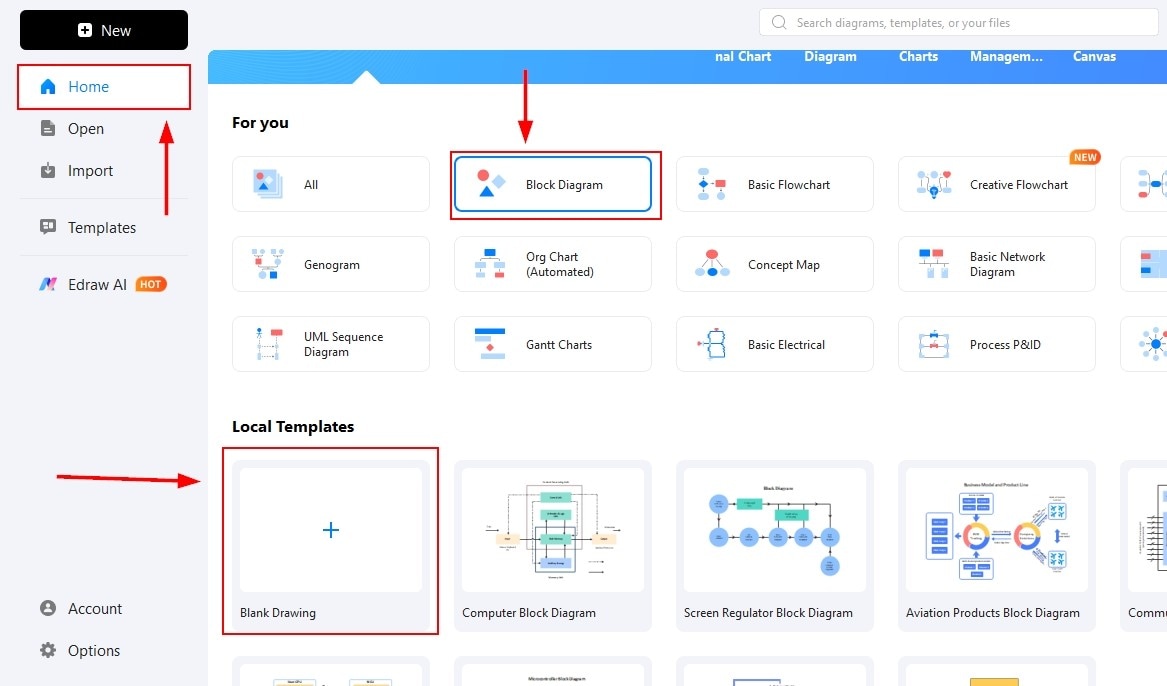
Step2 Drag and Drop Symbols and Elements on the canvas
- Find the relevant shapes and elements in the symbol’s library.
- Click an element or drag it directly to the canvas.
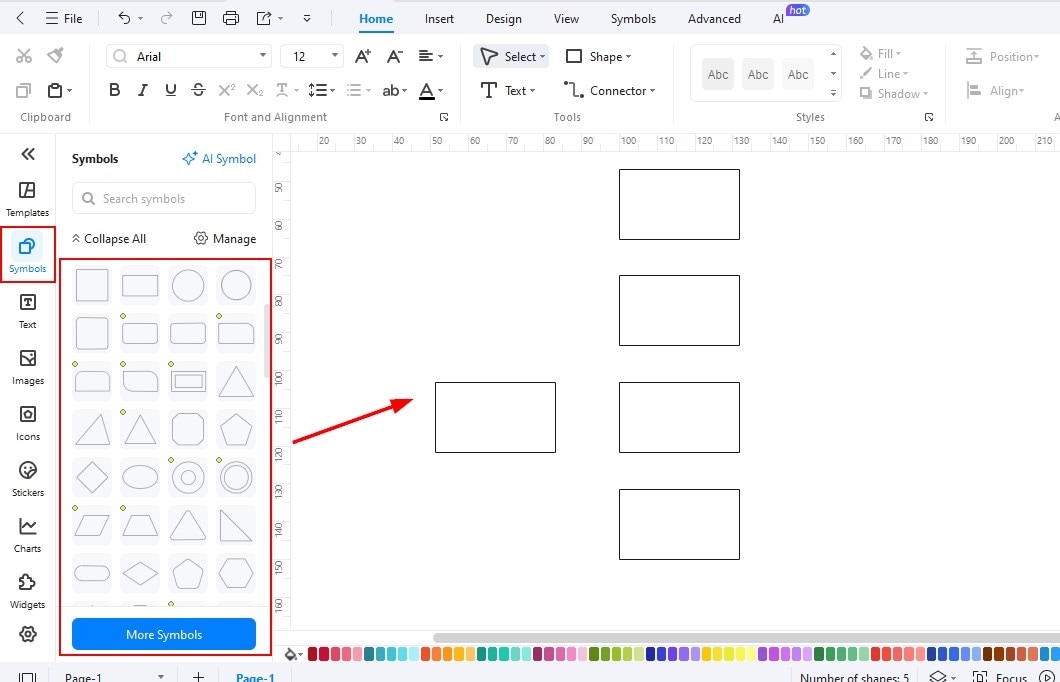
Step3 Add Text for each Block
- Arrange all the elements and shapes added according to your block diagram needs.
- Use the Text tool or click the element to add text for each element added.
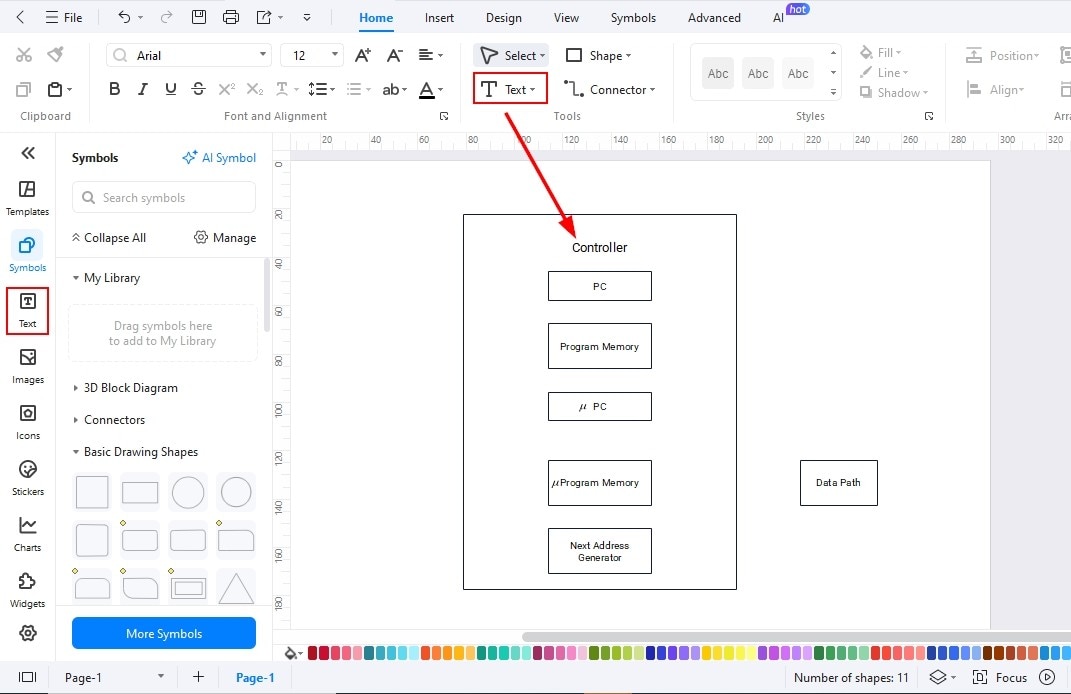
Step4 Add Relationships/ Connections
- Find the connector tool in the top menu bar and add connections among the elements. Choose the connector type to add appropriate connections.
- If you need arrows, you can also use the symbols library to find arrows of different shapes.
- Add different colors for blocks to make your design look better.
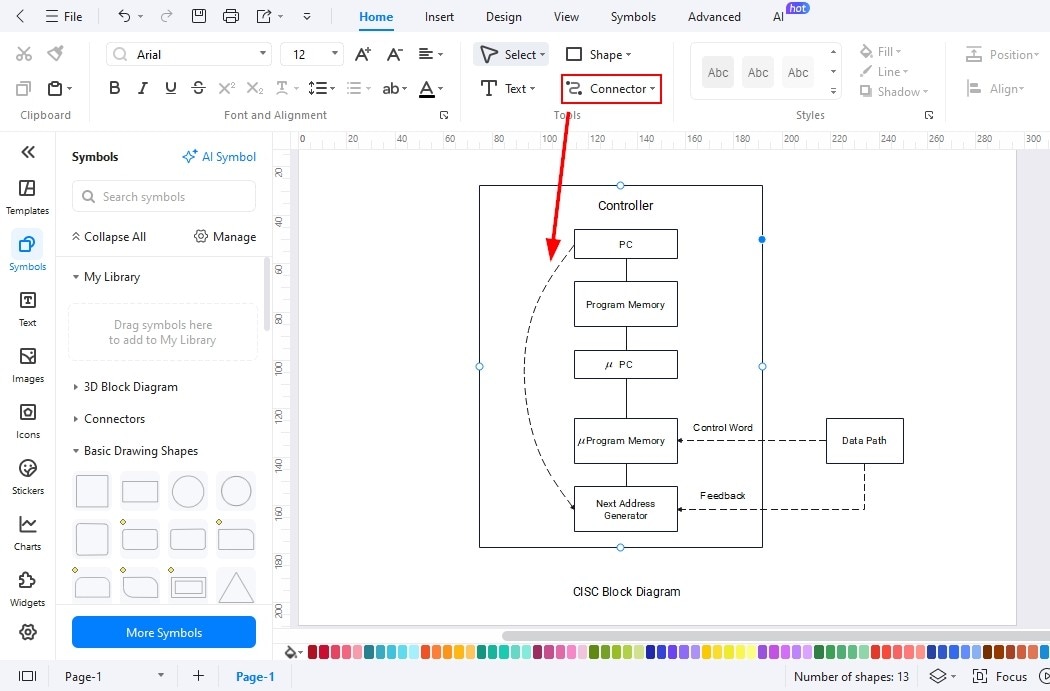
Step5 Export your Block Diagram
- Once all the editing is done, keep the source file and save your block diagram for further use.
- Click the export button or file in the upper left corner of the screen and choose a format. Set your design quality standard and save it.

Method 2: Start with a Template
Whether you’re working online, starting from scratch, or simply looking to save time, using a ready-made template can greatly simplify the process and reduce effort. Follow the steps below to create your diagram using a template.
Step1 Open Templates Library
- Click templates on the Home Page of EdrawMax and use the search bar to find block diagrams.
- Scroll down to find the best template that you think is the closest to your design.
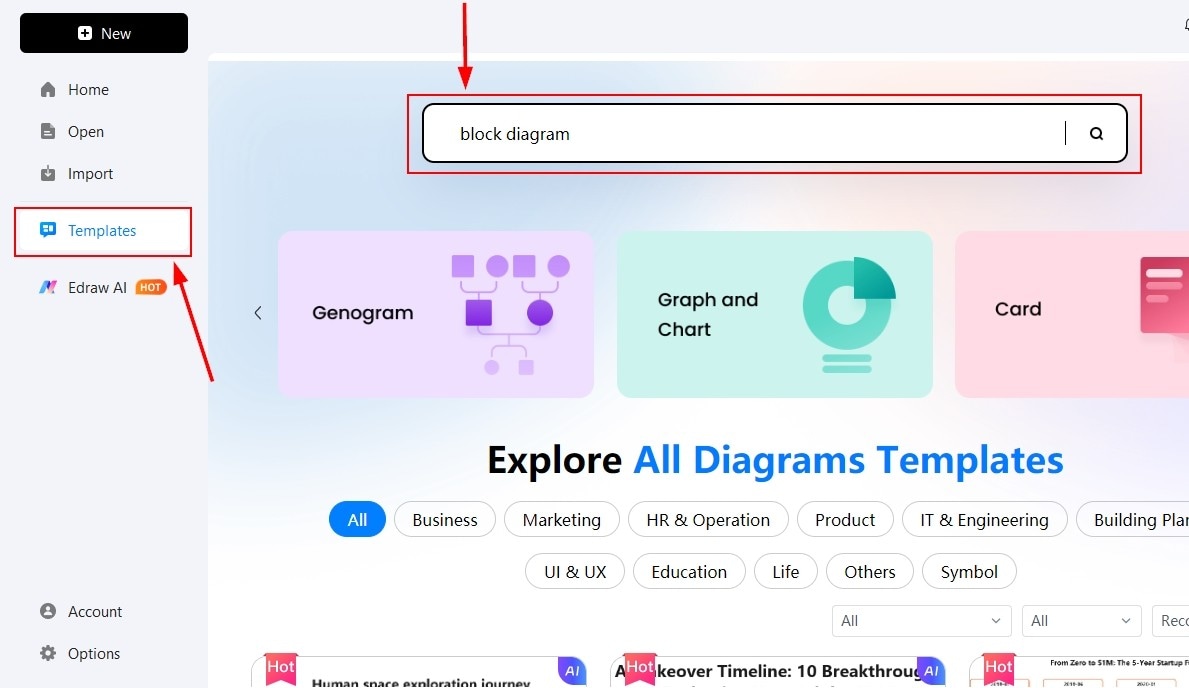
Step2 Select a Template and Click it
Once you find the template that could help you generate your block diagram, click it to bring it to the canvas.
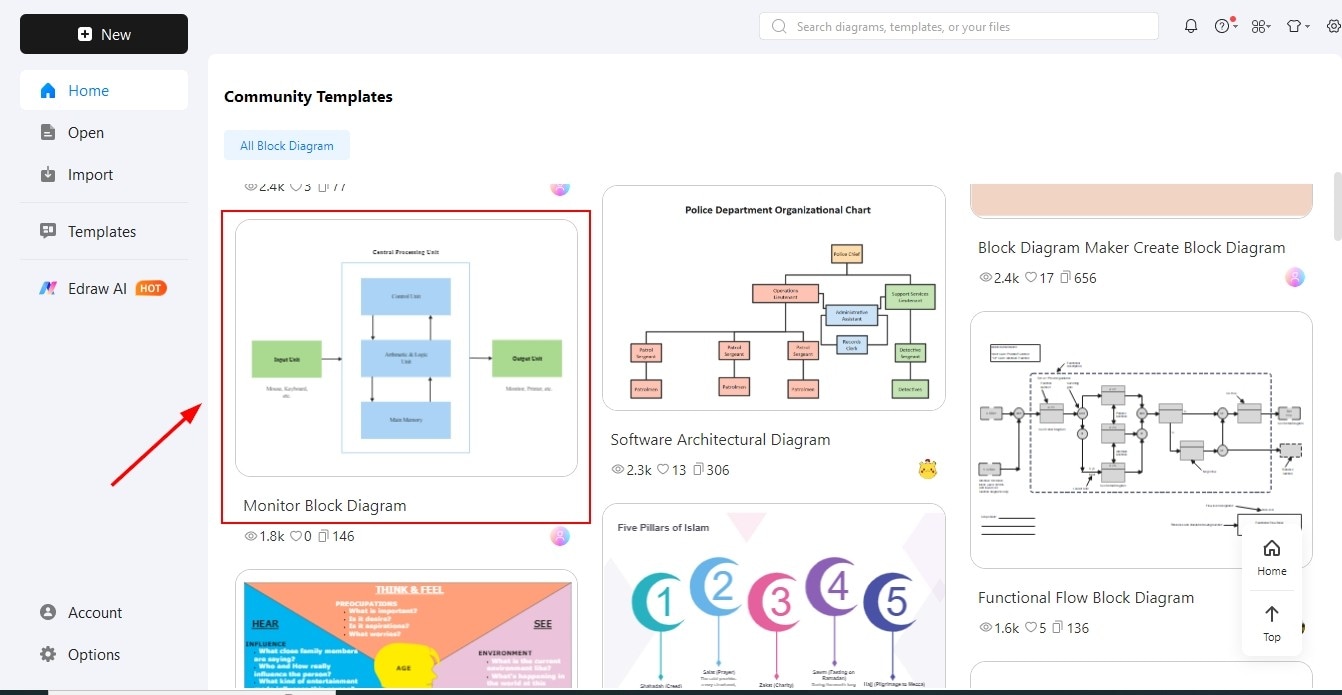
Step3 Edit the template
To edit the template, you need to use the customisation tools like connectors, text formats, themes, colours, and shapes.
- Add or delete shapes from the template. Use your own text to make your own block diagrams.
- You can change colors and themes for your block diagram here.
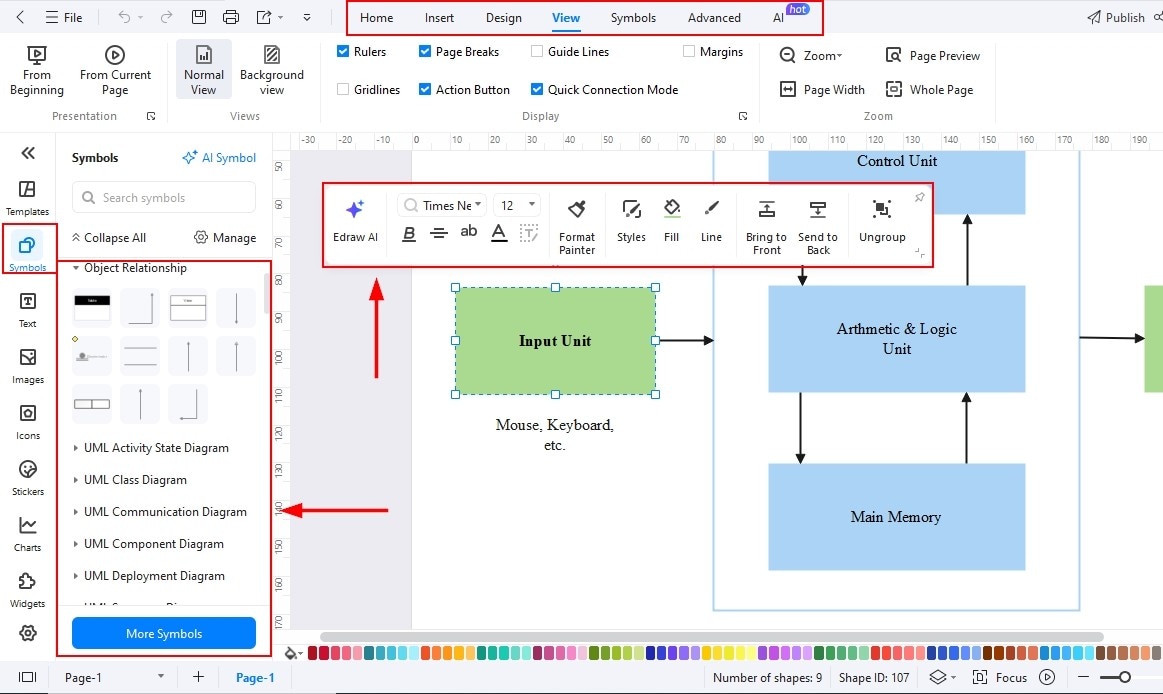
Step4 Export your file
- After all the edits, you need to export your design.
- Click the file and find the export option available, or use the export button available at the top of the menu bar and select a format to save it.
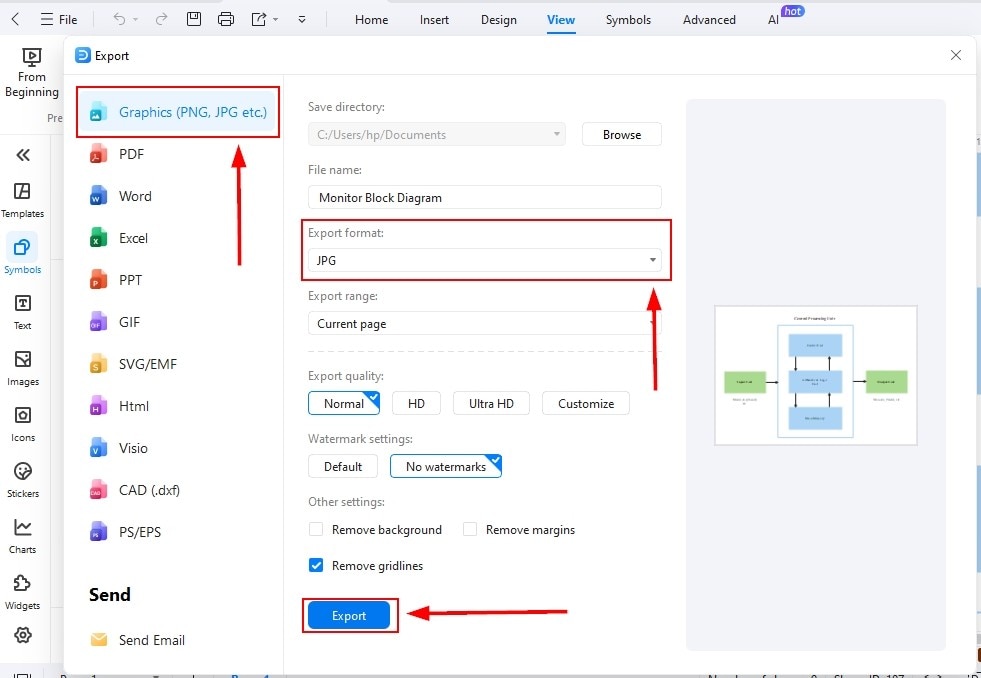
Final Thoughts
CISC microprocessors are widely used across different system architectures to maximize efficiency. Whether implemented in CPUs or GPUs, they play a key role in reducing system workload and improving performance.
A CISC block diagram is especially valuable for engineers and developers seeking to optimize system design and functionality. With EdrawMax, you can easily create detailed architecture diagrams and block diagrams—whether starting from scratch or customizing a ready-made template. This powerful tool ensures you achieve professional, accurate designs every time.





